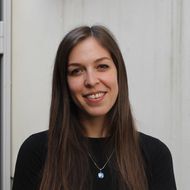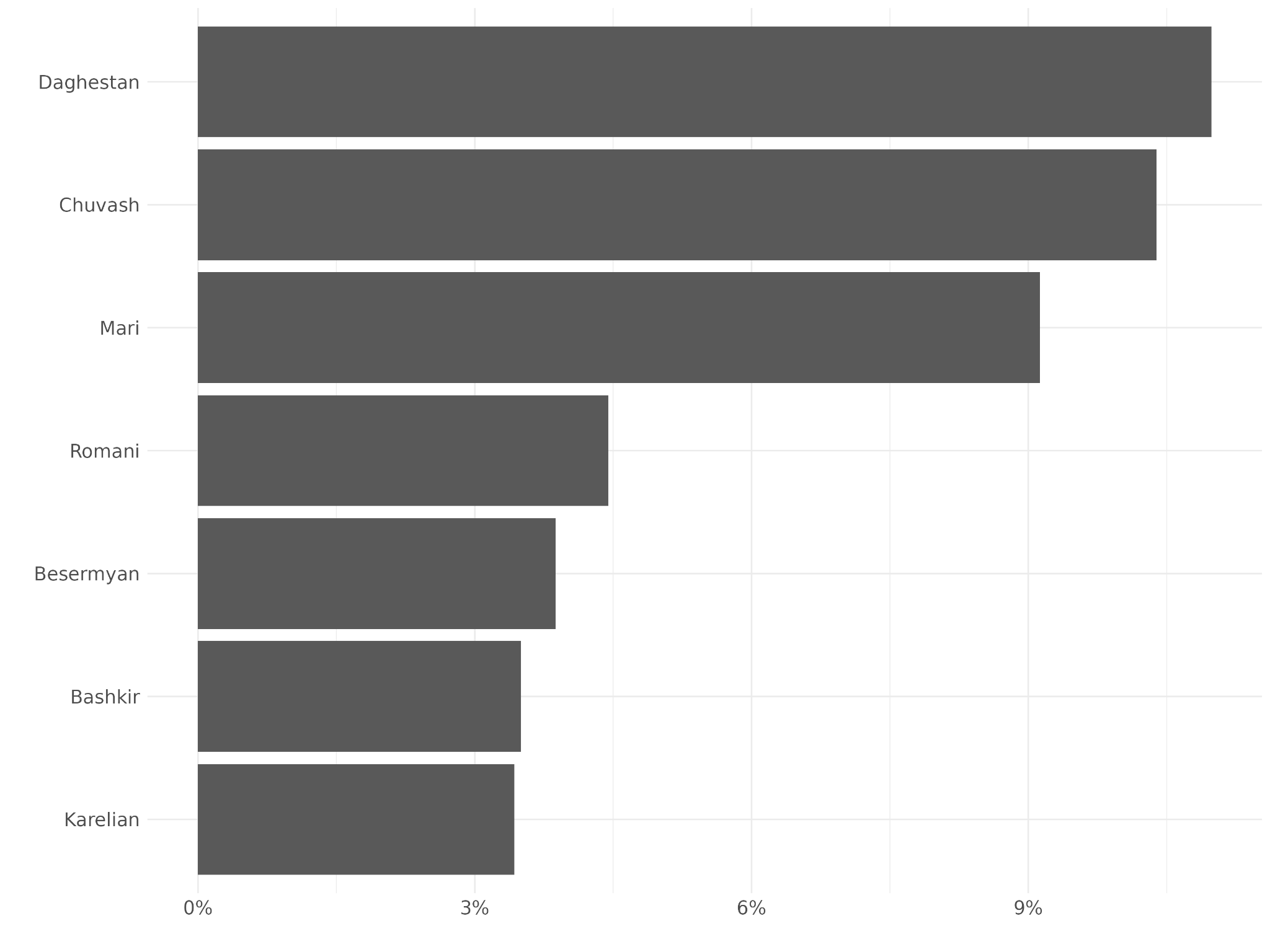HSE Linguists Study How Bilinguals Use Phrases with Numerals in Russian

Researchers at HSE University analysed over 4,000 examples of Russian spoken by bilinguals for whom Russian is a second language, collected from seven regions of Russia. They found that most non-standard numeral constructions are influenced not only by the speakers’ native languages but also by how frequently these expressions occur in everyday speech. For example, common phrases like 'two hours' or 'five kilometres’ almost always match the standard literary form, while less familiar expressions—especially those involving the numerals two to four or collective forms like dvoe and troe (used for referring to people)—often differ from the norm. The study has been published in Journal of Bilingualism.
Russian numerals can be confusing not only for foreigners, but also for native speakers and bilinguals—those fluent in two or more languages. Some studies suggest that the grammar of a speaker’s first language—such as Nanai or Ulchi—can influence their acquisition of Russian. Other researchers, however, argue that the influence of the native language is just one of several factors.
Researchers at the HSE Linguistic Convergence Laboratory analysed how bilinguals from different regions of Russia use numerals in spoken Russian. The team processed seven collections of interviews recorded in Daghestan, Bashkortostan, Chuvashia, Mari El, Karelia, and other regions. The sample included spontaneous speech from over 180 native speakers of 21 different languages. Each collection featured recordings of natural conversations in which participants responded to the researchers' questions and shared stories about themselves, their families, and village life. Out of more than 7,000 numeral-containing phrases, the researchers selected approximately 4,000 for analysis, excluding constructions with ordinal numerals and oblique cases.
The results showed that non-standard realisations of numeral constructions in Russian are influenced not only by the native language but also by other factors such as the education level, age, and—most importantly—how frequently the expression is used in speech. The more familiar a phrase—such as 'two hours' or 'five kilometres'—the less likely it is to appear in a non-standard form. This supports the hypothesis that linguistic constructions are acquired not through formal rules but through regular usage.

Chiara Naccarato
'It cannot be said that bilinguals simply project the grammar of their native language onto Russian when they use it. Even if a native speaker grew up in an environment where numerals function differently than in Russian, it doesn’t mean they will consistently copy the structures of their native language when speaking Russian,' explains Chiara Naccarato, Research Fellow at the Linguistic Convergence Laboratory, Associate Professor at the HSE Faculty of Humanities, and co-author of the paper.
Numerals from two to four, along with collective forms like dvoe and troe, proved particularly challenging for participants and were used in non-standard forms much more frequently.

These findings are relevant not only to linguists but also to educators, as they highlight which areas of grammar require more attention. In the future, the authors plan to investigate other areas where the native language may—or may not—influence the Russian language acquisition.
The study was conducted with support from HSE University's Basic Research Programme within the framework of the Centres of Excellence project.
See also:
IDLab: Fascinating Research, Tough Deadlines, and Academic Drive
The International Laboratory of Intangible-driven Economy (IDLab) was established at the HSE campus in Perm 11 years ago. Its expertise in data processing and analysis allows researchers to combine fundamental studies with applied projects, including the development of risk and cybersecurity models for Sber. The head of the laboratory, Professor Petr Parshakov, and Senior Research Fellow Professor Mariya Molodchik spoke to the HSE News Service about IDLab’s work.
HSE Psycholinguists Launch Digital Tool to Spot Dyslexia in Children
Specialists from HSE University's Centre for Language and Brain have introduced LexiMetr, a new digital tool for diagnosing dyslexia in primary school students. This is the first standardised application in Russia that enables fast and reliable assessment of children’s reading skills to identify dyslexia or the risk of developing it. The application is available on the RuStore platform and runs on Android tablets.
Physicists Propose New Mechanism to Enhance Superconductivity with 'Quantum Glue'
A team of researchers, including scientists from HSE MIEM, has demonstrated that defects in a material can enhance, rather than hinder, superconductivity. This occurs through interaction between defective and cleaner regions, which creates a 'quantum glue'—a uniform component that binds distinct superconducting regions into a single network. Calculations confirm that this mechanism could aid in developing superconductors that operate at higher temperatures. The study has been published in Communications Physics.
Neural Network Trained to Predict Crises in Russian Stock Market
Economists from HSE University have developed a neural network model that can predict the onset of a short-term stock market crisis with over 83% accuracy, one day in advance. The model performs well even on complex, imbalanced data and incorporates not only economic indicators but also investor sentiment. The paper by Tamara Teplova, Maksim Fayzulin, and Aleksei Kurkin from the Centre for Financial Research and Data Analytics at the HSE Faculty of Economic Sciences has been published in Socio-Economic Planning Sciences.
Mistakes That Explain Everything: Scientists Discuss the Future of Psycholinguistics
Today, global linguistics is undergoing a ‘multilingual revolution.’ The era of English-language dominance in the cognitive sciences is drawing to a close as researchers increasingly turn their attention to the diversity of world languages. Moreover, multilingualism is shifting from an exotic phenomenon to the norm—a change that is transforming our understanding of human cognitive abilities. The future of experimental linguistics was the focus of a recent discussion at HSE University.
Larger Groups of Students Use AI More Effectively in Learning
Researchers at the Institute of Education and the Faculty of Economic Sciences at HSE University have studied what factors determine the success of student group projects when they are completed with the help of artificial intelligence (AI). Their findings suggest that, in addition to the knowledge level of the team members, the size of the group also plays a significant role—the larger it is, the more efficient the process becomes. The study was published in Innovations in Education and Teaching International.
New Models for Studying Diseases: From Petri Dishes to Organs-on-a-Chip
Biologists from HSE University, in collaboration with researchers from the Kulakov National Medical Research Centre for Obstetrics, Gynecology, and Perinatology, have used advanced microfluidic technologies to study preeclampsia—one of the most dangerous pregnancy complications, posing serious risks to the life and health of both mother and child. In a paper published in BioChip Journal, the researchers review modern cellular models—including advanced placenta-on-a-chip technologies—that offer deeper insights into the mechanisms of the disorder and support the development of effective treatments.
Using Two Cryptocurrencies Enhances Volatility Forecasting
Researchers from the HSE Faculty of Economic Sciences have found that Bitcoin price volatility can be effectively predicted using Ethereum, the second-most popular cryptocurrency. Incorporating Ethereum into a predictive model reduces the forecast error to 23%, outperforming neural networks and other complex algorithms. The article has been published in Applied Econometrics.
Administrative Staff Are Crucial to University Efficiency—But Only in Teaching-Oriented Institutions
An international team of researchers, including scholars from HSE University, has analysed how the number of non-academic staff affects a university’s performance. The study found that the outcome depends on the institution’s profile: in research universities, the share of administrative and support staff has no effect on efficiency, whereas in teaching-oriented universities, there is a positive correlation. The findings have been published in Applied Economics.
Advancing Personalised Therapy for More Effective Cancer Treatment
Researchers from the International Laboratory of Microphysiological Systems at HSE University's Faculty of Biology and Biotechnology are developing methods to reduce tumour cell resistance to drugs and to create more effective, personalised cancer treatments. In this interview with the HSE News Service, Diana Maltseva, Head of the Laboratory, talks about their work.


